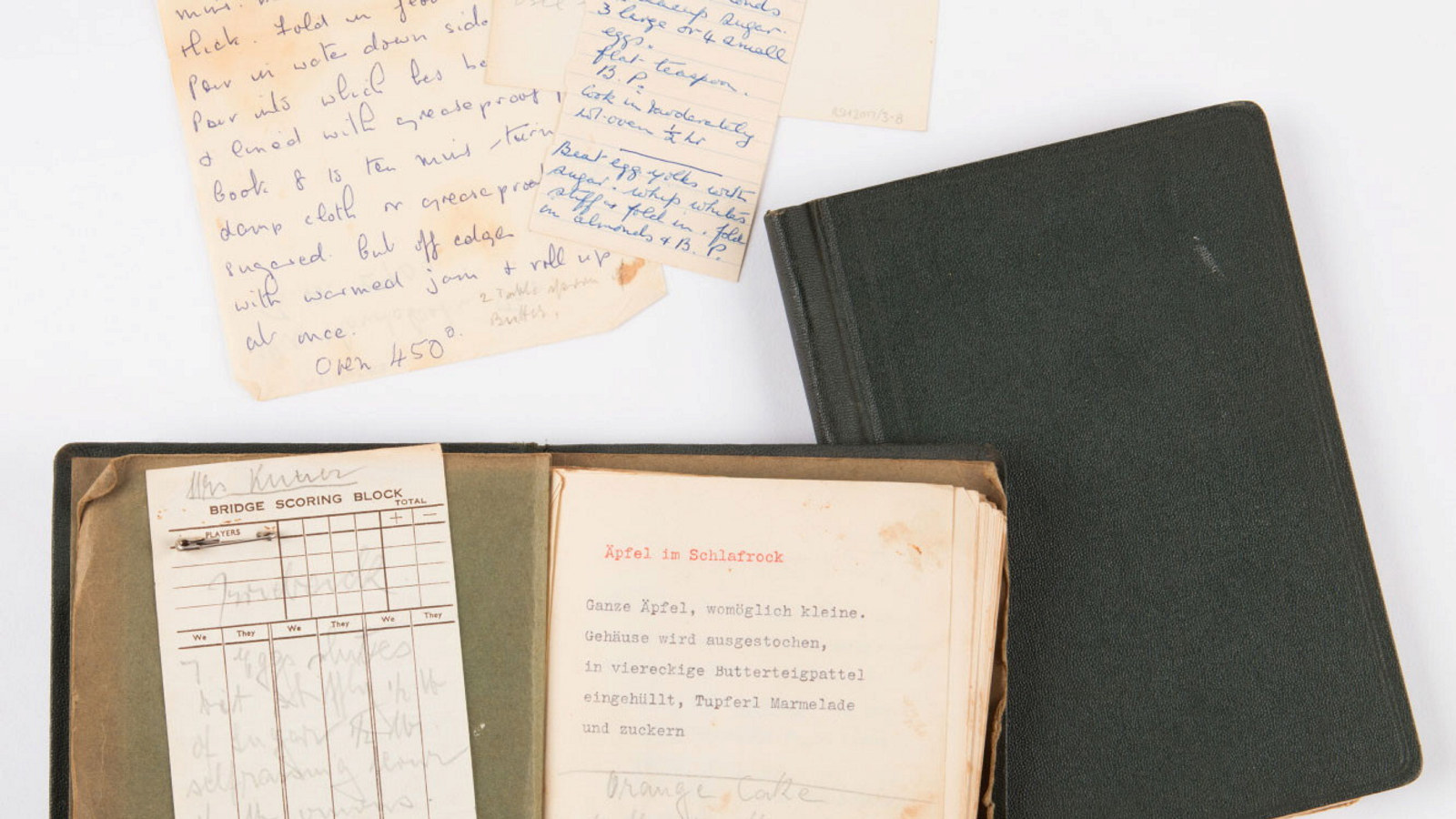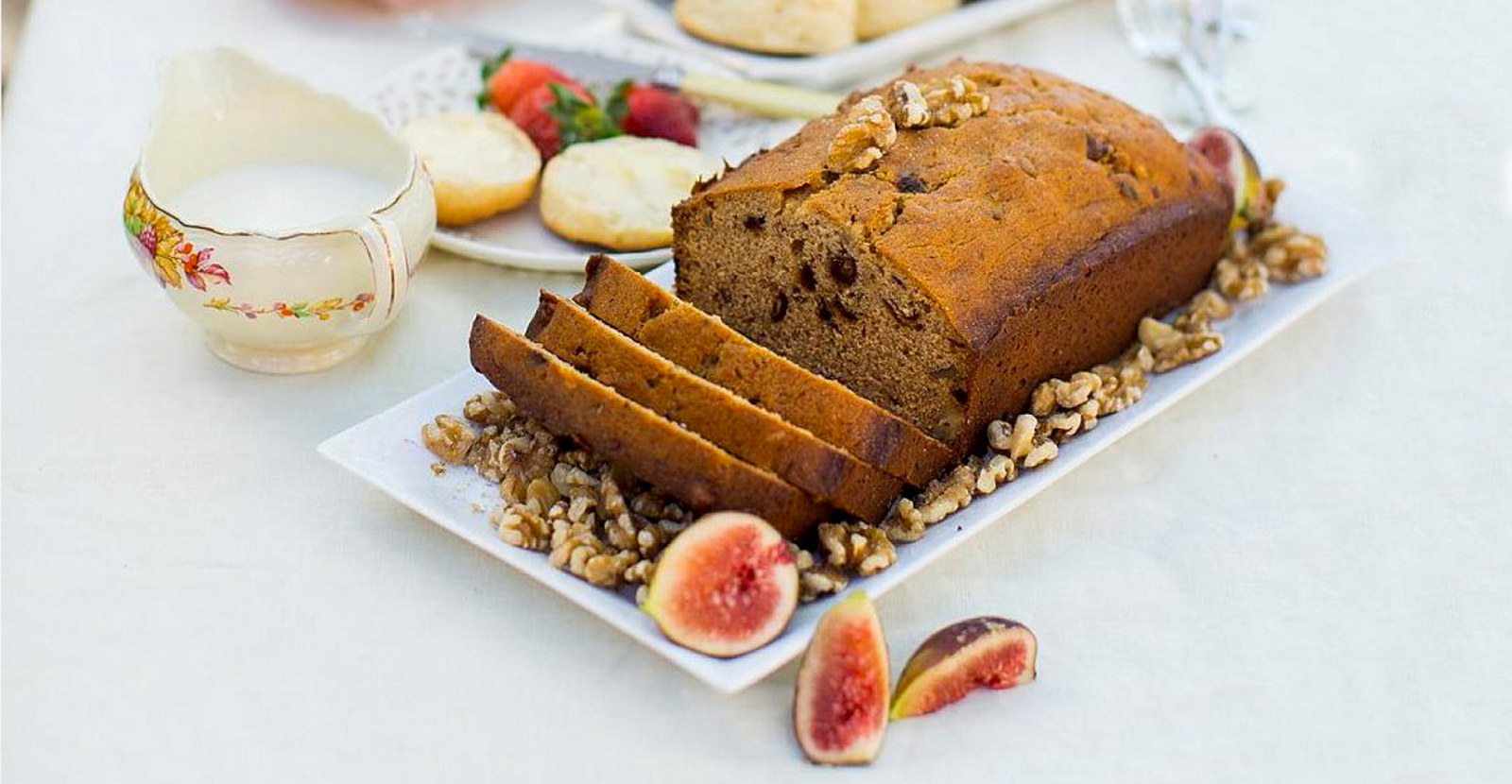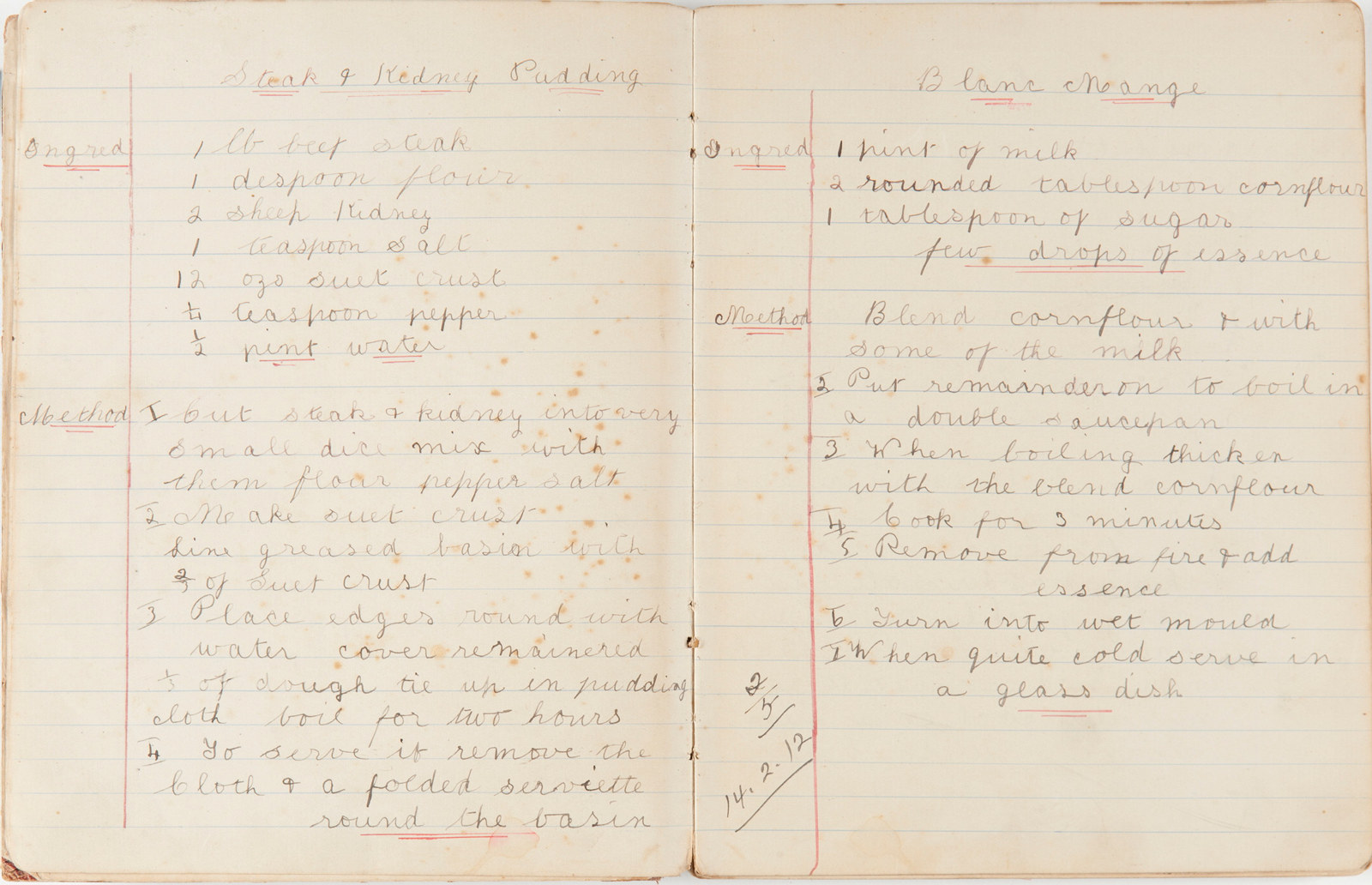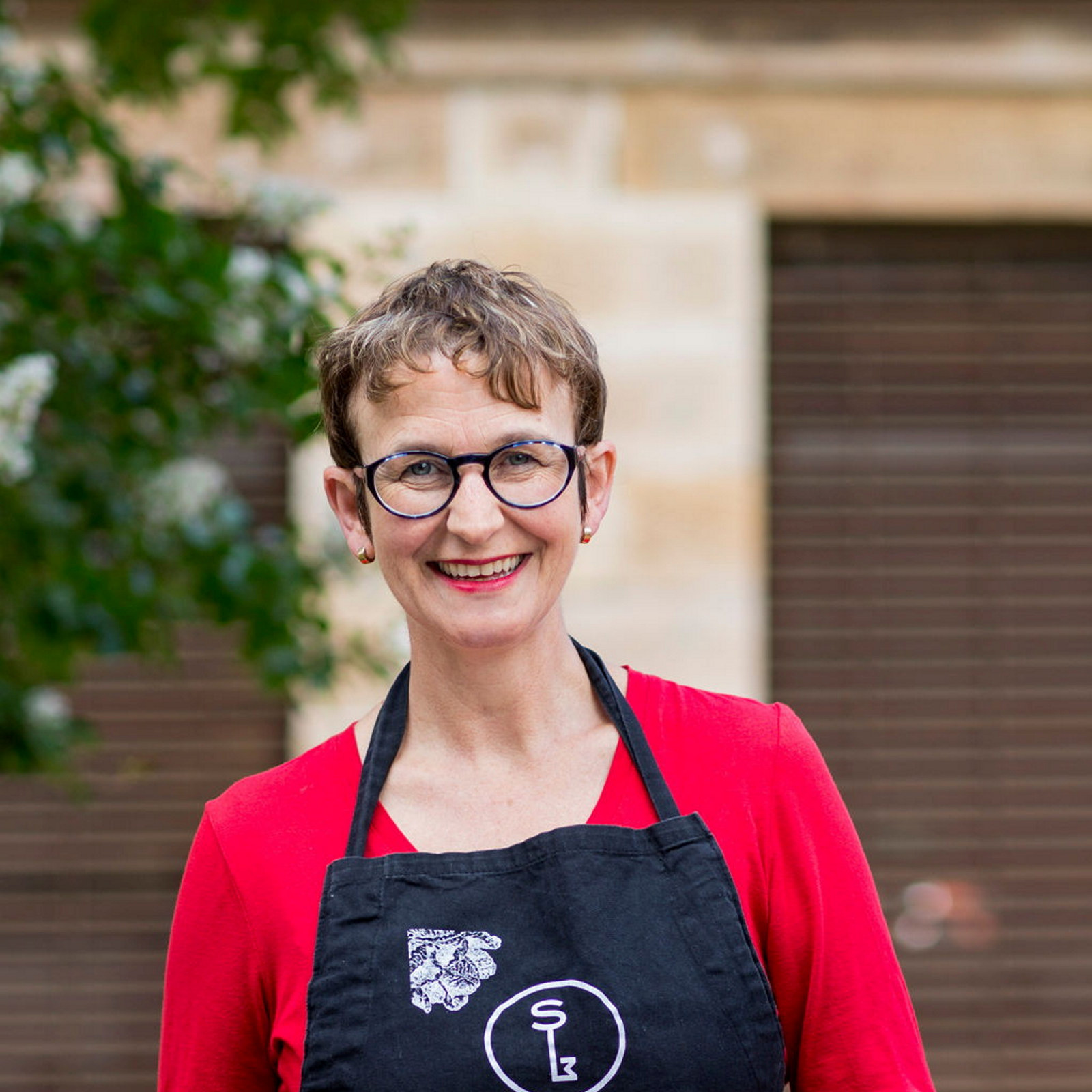Bischofsbrot (Bishop’s Bread)
This recipe is for one of the many sweet dishes in Rose Seidler’s recipe collection, originally recorded in German (see below).
Studded with colourful glacé fruits, Bischofsbrot, or Bishop’s bread, is an egg-rich, sweetened loaf popular in northern Europe. It is traditionally served to celebrate special events on the Christian calendar, at Easter in particular. The vibrant colours from the glacé fruit are said to symbolise stained-glass windows, a feature of many churches and cathedrals. The inclusion of Bischofsbrot indicates that the recipes in Rose Seidler’s collection were not only acquired through the family’s Jewish community network.
Ingredients
140g butter, softened, plus 1 teaspoon extra to grease the baking tin
140g icing sugar, sifted
6 eggs, separated
200g glacé fruit, diced*
Zest of 1 small lemon*
100g slivered or blanched almonds
140g plain flour, sifted, plus 1 tablespoon extra to dust the fruit
Extra icing sugar, to dust after baking
Serves 8
* You can replace the glacé fruit with a mixture of colourful dried fruit such as apricots, apples, sultanas and cranberries, soaked in freshly boiled water for 15 minutes and then well drained. Replace the lemon zest with store-bought mixed peel for additional citrus flavour, colour and texture.
Note: Bishop’s bread needs to be made a day before serving.
Method
Preheat oven to 180°C (or 160°C fan forced). Grease the base and sides of a loaf tin with 1 teaspoon of butter and dust with a little flour.
Cream the butter and icing sugar together in a large bowl until light and fluffy, then beat in the egg yolks one at a time. Dust the fruit and zest with a tablespoon of flour and toss to lightly coat the pieces (this helps to prevent them sinking to the bottom of the cake). Stir the fruit and the almonds into the bowl, and fold in half the flour. Whisk the egg whites until stiff, then fold them through the batter with the remaining flour, being careful not to overwork the batter.
Pour the batter into the loaf tin and bake for 40–50 minutes, or until the loaf is nicely browned on top and cooked through. Test by inserting a skewer into the centre of the loaf – the skewer should come out clean and dry.
Allow the loaf to cool in the tin for 5 minutes, then transfer it to a wire rack and dust it with the sifted extra icing sugar.
Note: Once completely cooled, store the loaf overnight in a container covered with a cloth. Do not slice until the next day.
Translation from the original German
Bischofsbrot (Bishop’s bread)
Cream 14 dkg* (140g) butter with 14 dkg (140g) icing sugar until fluffy, and then add, one at a time: 6 egg yolks, 20 dkg (200g) diced candied fruit, some lemon zest, 10 dkg (100g) diced almonds and finally 14 dkg (140g) flour together with 6 firm snow [egg whites, beaten until stiff]. Scrape into a buttered and floured Bishop’s Bread tin and bake for 40–50 minutes in a medium oven. Put onto a cake rack when still hot, dust with sugar, do not slice until the next day.
*1dkg (dekagram) equals 10g
The original recipe appears on page 5 of the folio of sweet recipes.
Translated by Avril Vorsay.

Cook & Curator
Translating tastes: the Rose Seidler recipe collection
Recently translated from the original German, recipes kept by Rose Seidler provide valuable insight into her culinary heritage and Austrian identity
Published on
Recipes
Browse all
A manuscript cookbook from Meroogal
Cooking was an integral part of the rhythm of life for the family at Meroogal, near Nowra on the south coast of New South Wales

Don’t forget your homework
In a simple ruled exercise book, with margins drawn neatly in red ink, are over 60 pages of handwritten recipes, cooking rules and techniques, recorded by 12 year old Jenny (Dolly) Youngein, 104 years ago

Cook & Curator
Eier auf Florentiner Art (Eggs Florentine)
This classic recipe is simple to make yet rich and flavoursome. Perfect for a weekend brunch or a light supper

